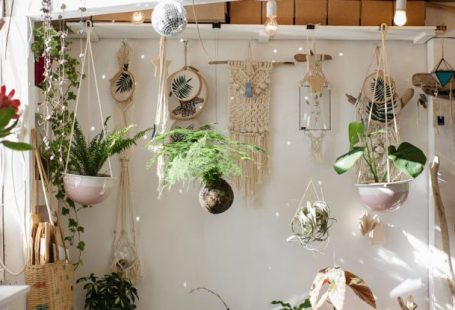Creating a low-maintenance backyard can provide you with a beautiful outdoor space that requires minimal upkeep, allowing you to spend more time enjoying it rather than constantly maintaining it. By implementing some strategic design choices, you can achieve a stylish and functional backyard that is easy to care for. Here are some tips on how to design a low-maintenance backyard that suits your lifestyle and preferences.
Choose the Right Plants
Selecting the right plants is crucial when designing a low-maintenance backyard. Opt for native plants that are well-suited to your climate and soil conditions, as they will require less water and maintenance compared to exotic species. Additionally, choose plants that are drought-tolerant and disease-resistant to minimize the need for watering and pesticides. Incorporating perennial plants and shrubs can also help reduce the amount of replanting needed each season, saving you time and effort in the long run.
Create Defined Outdoor Living Spaces
To keep your backyard organized and easy to maintain, consider creating defined outdoor living spaces. This can include areas for dining, lounging, gardening, and recreation. Use hardscaping elements such as pavers, gravel, or decking to delineate these spaces and reduce the amount of lawn or plant beds that require regular upkeep. By clearly defining different zones within your backyard, you can streamline maintenance tasks and make it easier to keep everything in order.
Minimize Lawn Areas
Lawns are often one of the most high-maintenance elements of a backyard, requiring regular mowing, watering, and fertilizing to keep them looking lush and green. To design a low-maintenance backyard, consider reducing the size of your lawn or replacing it with alternative ground covers such as gravel, mulch, or native grasses. These alternatives require less water and upkeep, helping you save time and resources while still creating a visually appealing outdoor space.
Add Mulch and Groundcovers
Mulch and groundcovers are essential components of a low-maintenance backyard design. Mulch helps retain soil moisture, suppress weed growth, and regulate soil temperature, reducing the need for frequent watering and weeding. Opt for organic mulches such as wood chips, bark, or straw, as they break down over time and enrich the soil. Groundcovers like creeping thyme, sedum, or clover can also provide a green carpet effect while requiring minimal maintenance once established.
Incorporate Sustainable Features
To further enhance the low-maintenance aspect of your backyard, consider incorporating sustainable features such as rain gardens, permeable paving, and composting areas. Rain gardens help manage stormwater runoff and reduce the need for irrigation, while permeable paving allows rainwater to infiltrate the soil rather than running off into storm drains. Composting areas can help you recycle kitchen and yard waste into nutrient-rich soil amendments for your plants, reducing the need for synthetic fertilizers.
Choose Easy-care Hardscaping Materials
When designing a low-maintenance backyard, opt for hardscaping materials that are durable and require minimal upkeep. Materials such as composite decking, concrete pavers, and natural stone are easy to clean and maintain, requiring only occasional sweeping or washing to keep them looking their best. Avoid high-maintenance materials like wood that require regular staining or sealing to prevent deterioration. By choosing low-maintenance hardscaping materials, you can reduce the amount of time and effort spent on upkeep in your backyard.
Embrace Simplicity in Design
Simplicity is key when designing a low-maintenance backyard. Avoid overly intricate landscaping features, elaborate plant arrangements, or fussy design elements that require constant attention. Instead, focus on creating a clean and streamlined outdoor space with a cohesive color palette, minimal clutter, and functional design elements. Keep pathways clear, maintain a clutter-free outdoor living area, and choose furniture and decor that are easy to clean and weather-resistant. By embracing simplicity in your backyard design, you can achieve a low-maintenance space that is both visually appealing and easy to care for.
Maximize Outdoor Lighting
Outdoor lighting not only enhances the ambiance of your backyard but also improves its functionality and safety. To design a low-maintenance backyard, incorporate energy-efficient LED lighting fixtures that require minimal maintenance and have a long lifespan. Consider installing solar-powered lights along pathways, decks, and garden beds to illuminate key areas without the need for wiring or electricity. By maximizing outdoor lighting in your backyard, you can extend the usability of your outdoor space into the evening hours while minimizing the need for ongoing maintenance.
Conclusion:
Designing a low-maintenance backyard is all about making smart choices that reduce the need for constant upkeep while still creating a beautiful and functional outdoor space. By selecting the right plants, creating defined outdoor living spaces, minimizing lawn areas, adding mulch and groundcovers, incorporating sustainable features, choosing easy-care hardscaping materials, embracing simplicity in design, and maximizing outdoor lighting, you can create a backyard that is easy to maintain and enjoy for years to come. With a thoughtful approach to design and a focus on practicality, you can achieve a low-maintenance backyard that reflects your personal style and enhances your outdoor living experience.





